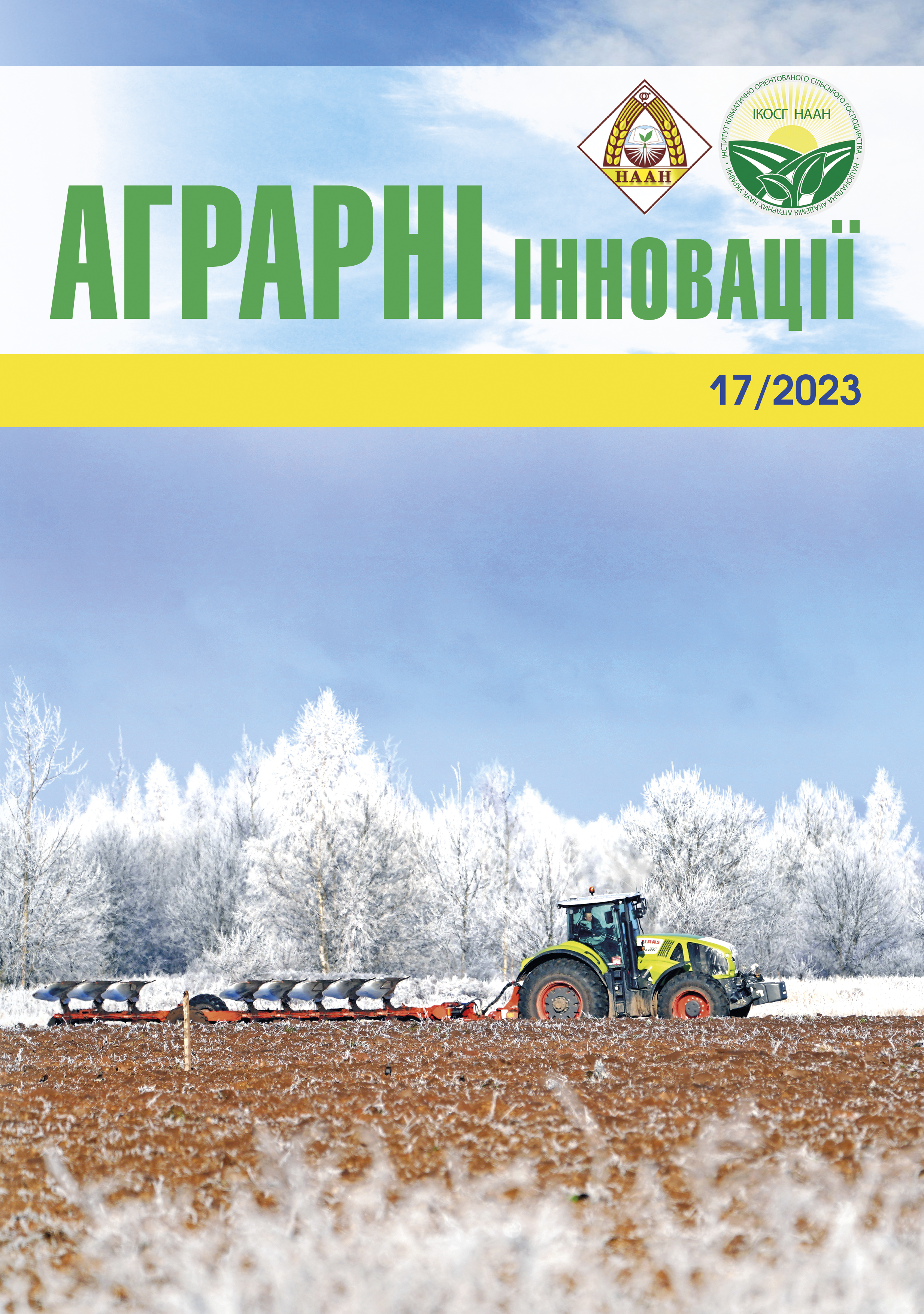CHANGE IN THE PATHOGENESIS OF SAPROPHYTE FUNGI IN BEET AGROCENOSES
Abstract
Purpose. To investigate the change in the pathogenesis of saprophytic fungi in beet agrocenoses. Methods. Laboratory and field methods. Results. It was found that soil fungi-saprophytes, which act as necrotrophs, require nutrients for the start of their development, and they find those nutrients only in the plant root tissues by switching to a parasitic way of existence. The largest number of the infectious rudiments (per 1 g of absolutely dry soil) that can germinate and form fungi colonies was isolated from the soil samples taken in the zone of unstable moisture (115 000), while in the zone of insufficient moisture, the number was 101 000. It should be noted that in the spring, no fungi of the genus Rhizoctonia (pathogens of brown and red rot) were found in the soil, which confirms our opinion about their predisposition to a parasitic way of existence. In particular, the amount of inoculum of soil fungi in the areas of activity of BTsEBS and VPEBS during the period of crop vegetation increased 1.5 times, especially due to the expansion of the species composition of Fusarium, Penicillium and dark-colored fungi. One of the important indicators of the pathological process today is the rate of mycelium growth and germination of pathogen spores which is characterised by many factors. It should be noted that a significant difference in the growth rate of the presented fungi was observed. Intensive growth of mycelium at a rate of 0.937 with the formation of spores marked micromycete Mucor muced, which provokes rot of the soft tissues of the root. It was found that dark-colored species of fungi demonstrated different growth rates: for example, the growth rate of Phoma betea was significantly lower than Alternaria and Thielaviopsis, which much faster captured space and stimulated the development of the disease. Phoma betea was often detected in conjunction with other species. Slower development of mycelium was also noted in toxin-forming types of penicillium, which, with their specific chemical toxins inherent in these micromycetes, enhanced the development of rot. Temperature is one of the main factors in the distribution, regulation of growth and physiological activity of mycobiota. It is known that most species of fungi develop within the optimal temperature of 18−25оC, which is most favourable for the development of pathogens. There is a minimum and maximum temperature at which the disease does not develop, that is, the development of the pathogen slows down. Therefore, the greater the rate of growth of the fungus, the more intensively it captures space and affected healthy tissues in the natural environment. Fungi that developed more slowly were often suppressed by fast-growing species. This allows us to talk about a more intense formation of parasitic properties in fast-growing micromycetes. The growth rate of fungi is affected by the pH of the medium, which is modified by the root secretions of plants. Having analysed the pH of the root secretions of various crops of beet agrocenoses, it was found that in almost all crops, the secretions had a slightly acidic reaction of 5.0−6.5. This contributed not only to the formation of the composition but also to the development of most soil fungi, especially fusariums. It should be noted that soil fungi develop in a wide range of pH, from alkaline to acidic. We analysed the influence of the pH of the medium on the growth rate of fusariums – pathogens of fusarium rot and necrosis of vascular fibrous bundles. The dominant species of fusarium actively developed at a pH of 6.0, which corresponds to the acidity of the root secretions of many plants of beet crop rotation. The difference in the growth rate of mycelium in a slightly acidic medium demonstrated F. culmorum (0.489 mm/h), F. moniliforme (0.485 mm/h) and F. solani (0.321 mm/h). Under such conditions, F. oxysporum developed somewhat slowly (0.171 mm/h). Those species of fusarium, the growth rate of which was slow, as a rule, can be detected in combination with other species of micromycetes which enhanced the development of pathogenesis. Conclusions. Thus, the present research describes the components of the biological factor of changes in the pathogenesis of the pathogens of root diseases due to the formation of the species composition of mycobiota, which affects sugar beet plants in today’s economic conditions. In particular, it was found that this process is influenced by a complex of factors, among which the significance is given to the reaction of sugar beet root pathogens to the zonality of crop cultivation, pH of the medium and some others.
References
2. Саблук В.Т, Шендрик Р.Я., Запольська Н.М. Шкідники та хвороби цукрових буряків. Київ : Колобіг, 2005. 448 с.
3. Беккер З.Э. Физиология и биохимия грибов. Москва : МГУ, 1988. 215 с.
4. Калинина Р.Т. Определение патогенности и наличия фитотоксионов у грибов рода Fusarium возбудителей корневой гнили озимой пшеницы. Микология и фитопатология. 1980. Т. 14. Вып. 1. С. 51–56.
5. Буряки цукрові. Методи визначення ураженості хворобами : ДСТУ 6058:2008 [Чинний від 2010-01-01]. Київ : Держспоживстандарт України, 2010. 6 с. (Національні стандарти України).
6. Литвинов Н.А. Определитель микроскопических почвенных грибов. Ленинград, 1987. 294 с.
7. Наумов Н.А. Методы микологичских и фитопатологических исследований. Москва : Сельгозгиз, 1937. 312 с.






